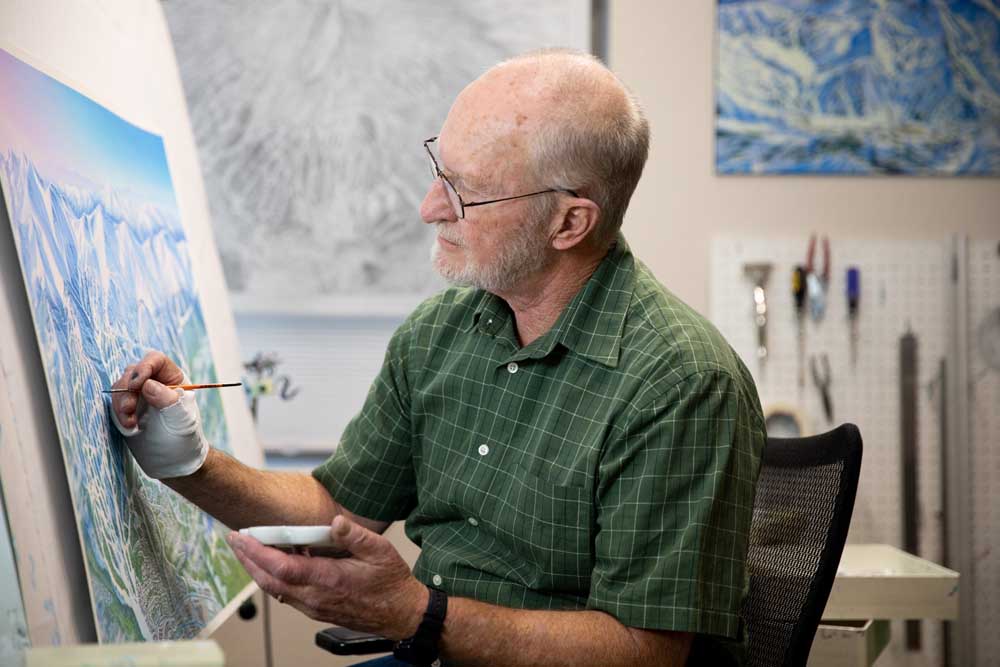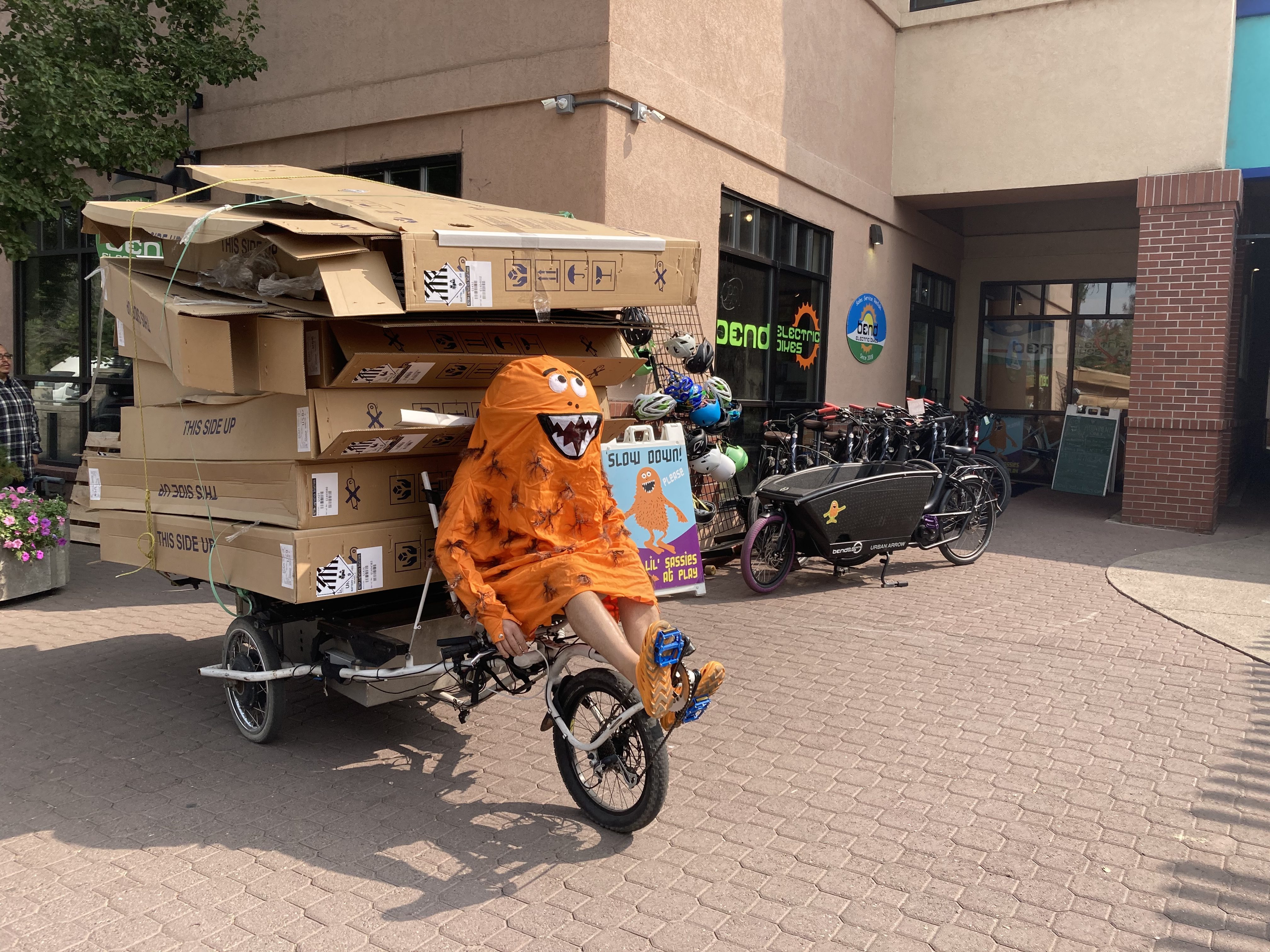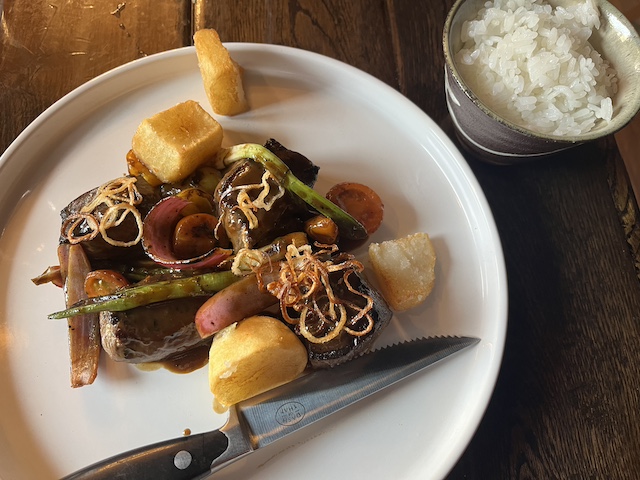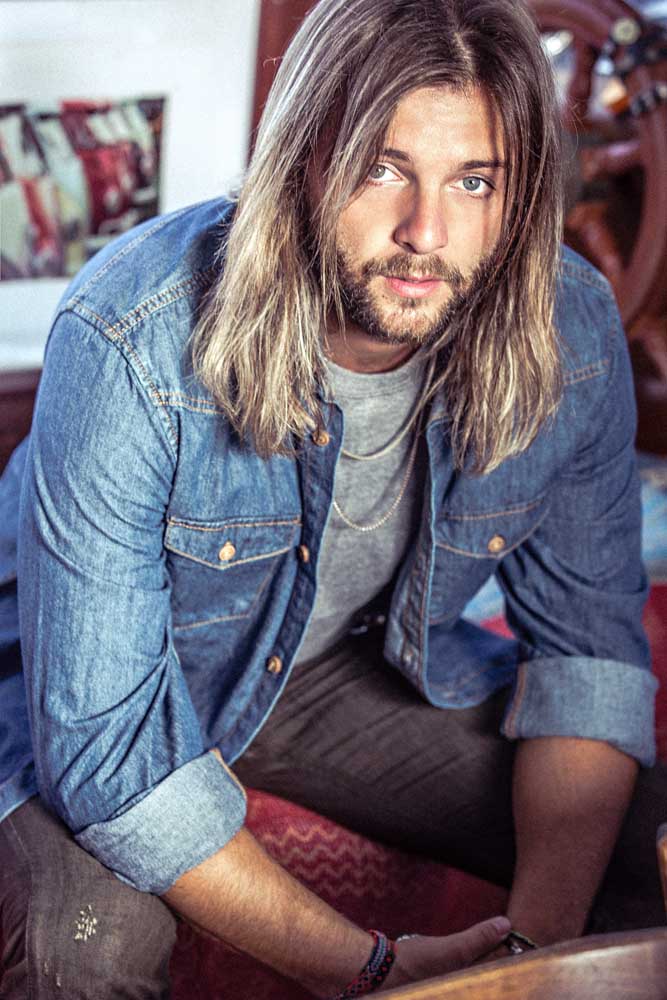Artist commissioned to paint Mt. Bachelor in watercolor
Published 12:00 am Sunday, March 3, 2019

- James Niehues works in his home studio in Parker, Colorado, on Dec. 17, 2018. (Submitted photo)
In the winter morning light, Mt. Bachelor is anything but white. Downy snow that takes on hues of pink, blue and lavender drape its cornices and gullies. Artist James Niehues, who is painting a watercolor portrait of Mt. Bachelor, loves teasing out these colors.
“In high atmosphere, (temperatures) will freeze all the molecules in the air. If you look toward the sun, it will become pink,” said Niehues, adding that he exercises little artistic license. “If you do get up there, you can see these colors.”
Niehues’ 30-by-40-inch depiction of Mt. Bachelor’s ski area, which he recently completed, will be among more than 200 ski resort paintings included in his career-capping book, “James Niehues: The Man Behind the Map.” It’s scheduled to be published by the Open Road Ski Co. in the summer.
Mt. Bachelor commissioned the watercolor to be used as the ski area’s official trail map for the 2019-2020 season and beyond.
Trail names will be added to versions of the map hanging inside Mt. Bachelor facilities and in its pamphlets.
While Niehues calls his paintings of ski resorts interpretations, they are quite literal.
For Mt. Bachelor, he chose a glow similar to 10 a.m. sunlight, in its positioning and intensity, he said. He also chose this light because it illuminates each side of the mountain.
“I felt that’s the light that defines the slopes the best,” Niehues, 73, said. “Mt. Bachelor has a very interesting profile.”
Niehues, who lives in Parker, Colorado, is also loyal to the specific trees that dot his illustrations.
“If you’re getting around the mountain and you want to know where you are, you can look at the side of the trail and see if the trees are conifers, spruce, pine or Aspen or (deciduous) trees, like back East,” Niehues said. “It’s very important to me that I have those trees right where they are. If (skiers) were stopped on a trail and were confused, they would have some reference.”
When it comes to painting giant tracts of tiny trees, Niehues doesn’t paint them one by one.
He has a technique that allows him add dimensionality to the forest over several paint applications — one to add shadow and another two for the surrounding snow that is both in the sunshine and shade.
Drew Jackson, Mt. Bachelor’s director of marketing and communications, said Niehues’ name is synonymous with beautiful ski resort illustrations.
“All of us in the ski industry are quite familiar with Niehues’ work. He’s pretty much the guru of ski area trail map art,” Jackson said. “We just felt like this would be something that people would appreciate. I think, especially in our local community, there is such a passion for Mt. Bachelor and a connection to it. To have a commissioned art piece makes the end result that much more special.”
During his career, Niehues has created around 350 different views of about 200 ski resorts. He finishes 10 to 24 each year and keeps the originals at his home studio. Ski resorts are given a digital copy to use however they like, while he retains copyright.
Niehues’ art is also used at Mt. Hood Meadows and several ski areas in Washington, including Crystal Mountain Resort, Mt. Baker and White Pass ski areas, he said.
Mt. Bachelor is tricky to paint because it’s a 360-degree strato volcano atop a shield volcano. The ski area’s current maps depict its slopes in four separate panels, which confused some mountain users, Jackson said.
In his painting, Niehues uses a more aerial vantage point in depicting Mt. Bachelor than he has with other resorts because there is so much terrain to include.
“I was quite excited to show that this can be done,” Niehues said.
Niehues has a background in landscape art.
He began making paintings of summertime mountains and golf courses before he got his start painting snowy ski resorts in 1987.
Denver artist Bill Brown asked Niehues to help him complete a commissioned trail map of Mary Jane Mountain for Winter Park Resort.
Niehues increased his client base when Brown retired, eventually painting watercolors of ski resorts all over North America, South America, Europe, Australia and Asia.
Niehues begins a painting by sketching it in pencil. He bases his sketch on aerial images of the mountain provided by the ski resort or, if the budget allows it, from photographs Niehues snaps overhead as a passenger in a small airplane.
“I just really enjoy the flight, getting up in a Cessna,” Niehues said. “It all comes to life. I can envision how I’m going to paint it once I fly it.”
The satellite images found on Google Earth are useful in initial research when Niehues is quoting a price and settling on the best perspective for a particular ski resort.
Mt. Bachelor’s current maps are based on a satellite image applied to a three-dimensional model, said Jackson, of Mt. Bachelor.
Niehues finds that satellite images aren’t as accurate as people might think.
“They can be off by 40 feet, so of course gullies become rounded and you don’t really see a good portrayal of the terrain,” Niehues said. “Most images are (taken) in the summer, so it’s very hard to see exactly what’s happening. You don’t see anything vertical, so you don’t see cliffs, you see trees from straight down. It’s a tool to help, but it isn’t what I use for the final illustration.”
While Niehues understands that ski resorts need to superimpose trail names all over his paintings, he recommends they don’t clutter the images by sticking the names right down the middle of the runs but off to the side with unobtrusive arrows pointing in.
Most ski resorts, but not all, take his advice, he said with a chuckle. Mt. Bachelor has yet to decide what they’ll do, but Jackson said he sees Niehues’ point.
Niehues has never cared to paint cityscapes.
There is a calming timelessness to mountain scenes, even if they’re criss-crossed with trails and chairlift lines — evidence of the human footprint.
“(Nature) is just less confining — more like we were meant to be,” Niehues said. “Maybe it’s because you’re not living with certain rules and regulations; in the wild, you can be more relaxed.”






